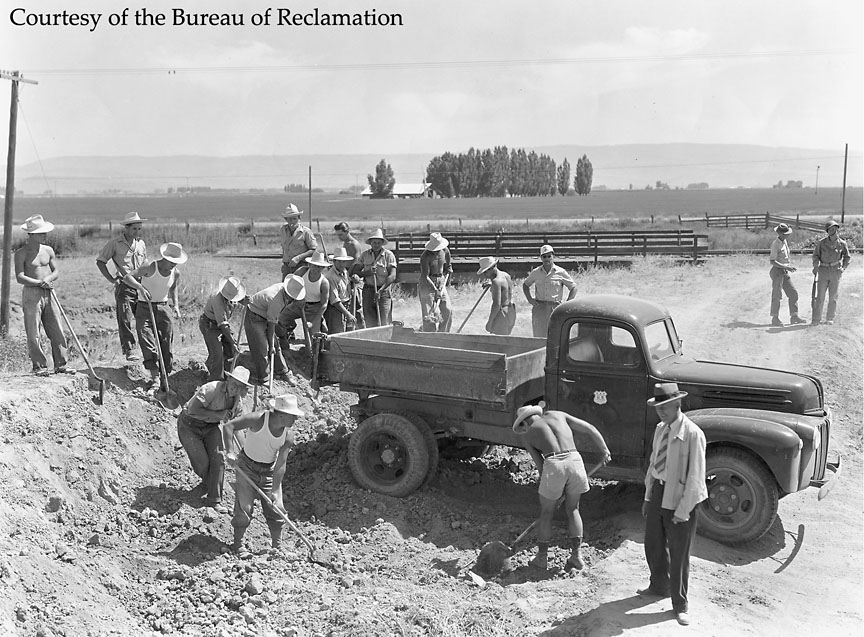- Catalog No. —
- BOR 7-26-1944
- Date —
- July 26, 1944
- Era —
- 1921-1949 (Great Depression and World War II)
- Themes —
- Government, Law, and Politics
- Credits —
- US Bureau of Reclamation, Klamath Basin Office
- Regions —
- Southwest
- Author —
- US Bureau of Reclamation
German POWs, 1944
During World War II, the United States War Department established approximately 150 prisoner-of-war (POW) camps to contain nearly 340,400 German POW’s. The War Department ordered that “every employable prisoner of war in the United States will be worked on essential work…which would have to be done whether or not there were any prisoners of war.” Some prisoners, for example, were put to work dismantling and salvaging obsolete army equipment. The War Manpower Commission used many prisoners, such as those pictured here near Tulelake, California, as contract laborers on U.S. farms.
Camp Tule Lake, a Civilian Conservation Corps camp during the time of President Franklin Roosevelt’s New Deal, was located near the town of Tulelake and the Newell Japanese Internment Camp. German prisoners held at Camp White—six miles north of Medford, Oregon—were transferred to Camp Tule Lake and were hired by local farmers. Military trucks and jeeps mixed with local Tulelake traffic as guards transported the German prisoners—one, two, or three at a time—to area employers. The prisoners were paid 80 cents per day, which could be used to purchase merchandise at the camp store or placed in a trust fund available to them after the war. Most combined some of their wages to rent motion pictures, buy magazines, or purchase other items. At the end of the war, the prisoners were sent back to Germany, but not without being educated in U.S. history, English, geography, and the benefits of democracy and capitalism.
Further Reading:
“Reminiscence: John Fahey on ‘Reeducating’ German Prisoners during World War II,” Oregon Historical Quarterly 93, 1992-1993: 368.
Written by Robert Donnelly, Oregon Historical Society, 2003.
